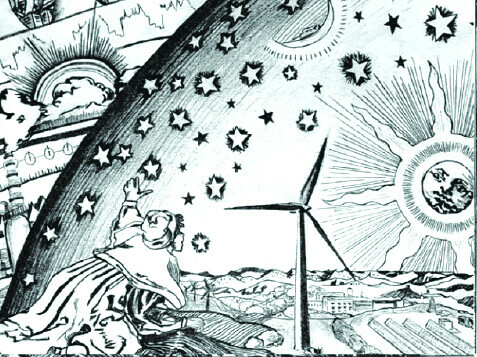News & Articles
Browse all content by date.

On behalf of myself, Generation Z, the young people of today and the future, I would like to invite you to read and educate yourself on energy issues and become an advocate for clean energy!
I am a UMD student who studied climate/energy justice issues this spring semester.
UMD is situated just off of the beautiful, rocky, lively North Shore of Lake Superior. This region provides us with natural resources beyond its beauty and has the potential to provide renewable forms of energy – sun, wind, hydro (less than 100 MW), geothermal – to power our lives.
As young people, we are aware that the beauty and natural resources will not be around if we do not take action to slow and reverse fossil fuel-caused climate change.
We hear of the deadline we have to cut our emissions in half; the current date set by the IPCC is 2030.
Less than 10 years.
So how can this be done? Through the energy sector. By electrifying our transportation and decarbonizing electricity production.
It is not enough to simply stop driving gas-powered vehicles when the electricity you use to charge them is still coming from coal.
It is not enough when electric utility monopolies continue to provide electricity from fossil fuels and nuclear energy.
Every spring students in UMD’s Climate Energy Justice course (Anthro-pology 3300) host the Duluth Power Dialog (DPD). This is a public event meant to shed light on how Duluth is decarbonizing its electric grid.
Students focus on energy democracy – a shift from a centralized, monopoly-owned energy grid to a clean energy grid that is centered around and co-governed by communities.
At the DPD we talk about a just energy transition that focuses on sustainability, low-carbon and an equitable energy system. We learn to pay attention to “techno-ecological synergies,” the way solar and other renewable energy technologies can be sustainably paired with agriculture or placed on unused land such as toxic superfund sites and landfills.
Students organizing DPDs under-stand that, in order to invoke change, citizens have to band together, advocate for clean energy, and take action.
Monopoly-owned utilities on their own are not going to transition to renewable energy. This is evident in G. Bakke’s The Grid; The Fraying Wires Between Americans and Our Energy Future. These investor-owned monopoly utilities provide electricity to around 70% of the country. They do not have competitors.
Without competition, Bakke shows why there’s no incentive for these companies to transition to clean energy: consumers have no other options!
The Grid also shows that communi-ties and individuals can spark change and transition themselves to renewable energy. We learned this lesson from another reading on Germany’s energy transition, Energiewende.
Germany provides a clear example of how community engagement is necessary for a successful energy transition. A rural German community helped spark their energy transition by protesting the construction of a new nuclear plant back in the 1970s.
It is a good reminder of how community activism can stop new risky power plants. Similar activism is being seen in our community since Minnesota Power has proposed a $700 million methane gas power plant, the Nemadji Trail Energy Center (NTEC) in Superior, Wis.
I view a successful energy transition as one that includes a 100% renewable energy agenda. I think small, decentralized energy grids are necessary to complete this transition. Without smaller and smarter grids, we will keep running into the same problems– lack of incentive and lack of community input – as we have seen with our big monopoly-owned energy companies.
The transition needs to involve the ability to capture and store energy through battery and even pumped hydro-storage. These are systems that allow us to release the stored, surplus energy back into the grid to handle peak capacity.
In past years, DPDs have invited experts to town to talk about key problems in our region. At the center of many of these problems – our monopoly, investor-owned utility, Minnesota Power (MP).
A key concern is MP’s massive hydropower purchase from Manitoba Hydro. Brought to Duluth from distant Canada through hundreds of miles of new transmission lines (paid for on local customers’ electric bills), these 250 megawatts of hydroelectricity do not all qualify as renewable energy.
Because large dams have damaging impacts on fisheries and water flows, Minnesota and many other states set a 100 megawatt limit on how much hydroelectricity can count as renewable energy.
A second issue is that Minnesota Power has shown a fair deal of resist-ance to local community ownership of solar. This is counterproductive to a just and democratic energy transition.
For the 2022 Duluth Power Dialog, we invited a new voice, the voice of future ancestors.
Our class created a giant owl puppet, which represents future generations watching us and reminding us that what we do now impacts their future more than it impacts us.
Yes, we will see devastating environmental effects in our own time, but what is in store for the future?
At this year’s event on UMD campus, I noticed that our puppet intrigued people. Students looked up from their laptops and were pulled into our conversation by the music and imagery of the puppet.
Using my civic voice in this setting felt very new to me as this is not something I have had an opportunity to do before.
I hope the puppet we created spurs conversations about the impact of America’s climate pollution and what we can do as citizens to create change.
I hope the owl can show up at utility hearings, protests and community conversations and spark change.
I hope next year’s Anthropology 3300 students will take the puppet out into the community and make their own impact.
| Tweet |

